Tour Places to Visit in Sri Lanka
Sri Lanka At a Glance
Within a mere area of 65,610 kilometres lie 8 UNESCO World Heritage Sites, 1,330 kilometres of coastline – much of it pristine beach – 26 national parks showcasing an abundance of wildlife, nearly 500,000 acres of lush tea estates, 250 acres of botanical gardens, 350 waterfalls, 25,000 water bodies, to a culture that extends back to over 2,500 years.
Sri Lanka, officially the Democratic Socialist Republic of Sri Lanka, is an island country in South Asia, located in the Indian Ocean to the southwest of the Bay of Bengal and to the southeast of the Arabian Sea. The island is geographically separated from the Indian subcontinent by the Gulf of Mannar and the Palk Strait.
Sri Lanka packs an extraordinary variety of places to visit within its modest physical dimensions, and few islands of comparable size can boast a natural environment of such beauty and diversity. Sri Lanka’s documented history spans 3,000 years, with evidence of pre-historic human settlements dating back to at least 125,000 years. The remarkable achievements of the early Sinhalese civilization can still be seen in the sequence of ruined cities and great religious monuments that litter the northern plains. Lapped by the Indian Ocean, the coast is fringed with idyllic – and often refreshingly undeveloped – beaches, while the interior boasts a compelling variety of landscapes ranging from wildlife-rich lowland jungles, home to extensive populations of elephants, leopards and rare endemic bird species, to the misty heights of the hill country, swathed in immaculately manicured tea plantations. Nor does the island lack in man-made attractions.
Administrative Capital
Sri Jayawardanapura Kotte
Commercial Capital
Colombo
Time Zone
GMT +5.30 hours
International Dialing
+94 / 0094
Currency
Sri Lanka Rupee (Rs. / LKR)
Languages spoken
Sinhala / Tamil / English
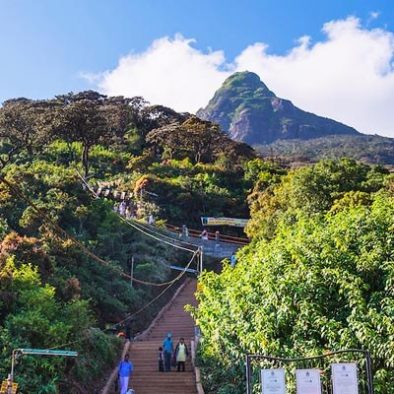
Adam's Peak
The mountain Sri Pada (Sanskrit for “holy foot”, actually only the footprint on the summit, English Adam’s Peak) is a 2243 m high single rock in central Sri Lanka in the district of Ratnapura. On the top there is an inhabited monastery. The mountain is a pilgrimage site for Buddhists, Hindus, Christians and Muslims. For the Buddhists, the footprint of the holy foot of Buddha is therefore the name “Sri Pada”. For the Hindus, the footprint of God is Shiva. For the Christians, it is the footprint of St. Thomas, and for the Muslims, it is the footprint of Adam, hence “Adam’s Peak”. Another name for the mountain is the Sinhalese “Samanala Kanda” means butterfly mountain because of the many butterflies that fly up the mountain at the beginning of the season.
Traditionally, the mountain is climbed at night. So you can bypass the heat of the day and experience the unique sunrise. The classic climb starts from the north from Dalhousie (33 km southwest of Hatton) directly at the foot of the mountain and takes a few hours.
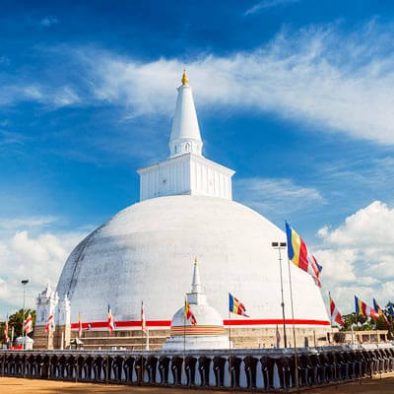
Anuradhapura
Anuradhapura is today one of the most important pilgrimage sites in the country. It is the capital of the Northern Central Province of Sri Lanka and is located about 205 km northeast of Colombo. The city was founded in the fourth century BC. In the vicinity of the Sri Mahabodhi tree and was also the first capital of Sri Lanka.
For more than a thousand years, Anuradhapura was the center of many Sinhalese royal dynastines. Today, there are many monuments of historical importance, besides there are numerous large Dagobas in the city. After significant excavations of palaces, monasteries and monuments it is today again an important center in Sri Lanka.
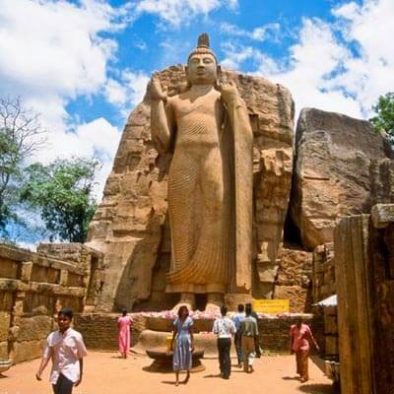
Aukana
Aukana is located about 50 km south of Anuradhapura. The upright standing Aukana Buddha is one of the most beautiful statues of Sri Lanka. The Stature carved out of the underlying rock was probably built in the 5th century and has a height of about 13 meters. The Lotus pedestal, on which she seems to stand, was subsequently developed and put under her feet.
The common height is 14 m. The right hand raised to blessing, the 80-ton Stature offers each visitor an impressive impression. The Aukana Buddha is praised for his internalized facial expression.
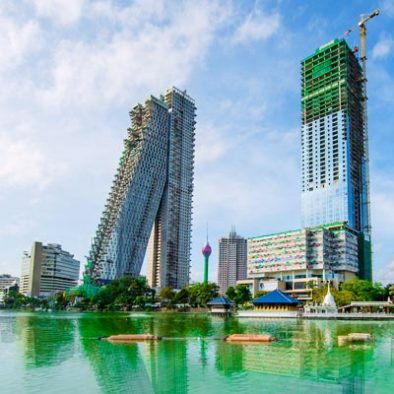
Colombo
Sri Lanka’s capital today with about 650,000 inhabitants. A fascinating city not only because of its mixture of East and West, but also because of its cozy mix of past and present. It is and remains the commercial city of the country.
After independence in 1948, the city became the political center of the island. Worth seeing today is the combination of colonial and modern architecture. Colombo offers visitors a variety of shops and markets of all kinds, good restaurants and several large modern shopping malls. Colombo offers perfect opportunities for those who want to shop extensively.
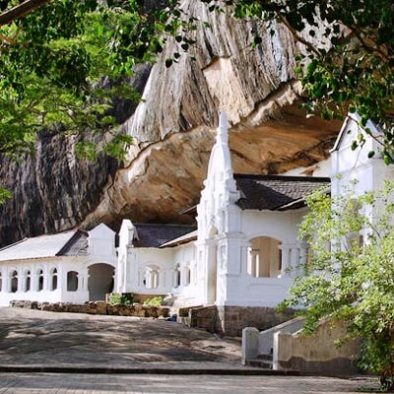
Dambulla
Dambulla is located in the Central Province of Sri Lanka, 148 km northeast of Colombo and 19 km away from Sigiriya. Dambulla is famous for its Buddhist cave tomb, for the largest rose quartz occurrence in South Asia, and for Namal Uyana (Ironwood Forest).
In Dambulla there are about 80 cave temples, of which 5 are large. Covering an area of 2100 m2, it is Sri Lanka’s largest temple complex. Most of the temples contain historical paintings and statues. The largest cave houses the most precious sanctuaries, including nearly 60 Buddha statues in all positions, Hindu gods and two Sinhalese kings. The ceiling is adorned with 1500 colorful scenes from Buddha’s life. There are a total of 153 Buddha statues, three statues of kings and four statues of gods. The latter are two Hindu gods (Vishnu and Ganesh), which originated in the 12th century. The paintings depict the life of Buddha, including Buddha’s temptation by the demon Mara and Buddha’s first sermon.
The temples are under the name “Golden Temple of Dambulla” since 1991 World Heritage by UNESCO.
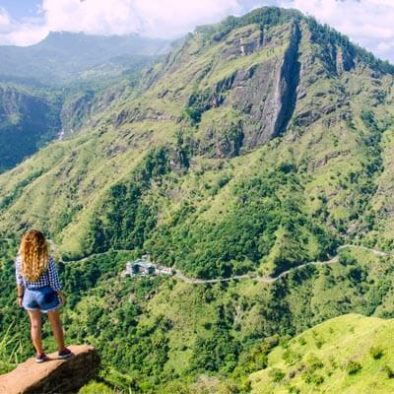
Ella
Ella is located at 1050 m in the central mountainous region of Sri Lanka, about 95km from Nuwara Eliya. Ella, meaning “waterfall” in Sinhala, it is named after the many waterfalls in the area. Ella is famous for the spectacular panoramic view of the mountains from the terrace of the Grand Ella Motel. All around Ella mountains and gorges, tea plantations, waterfalls and caves invite you for a walk or a hike. No matter where you go, it’s beautiful.
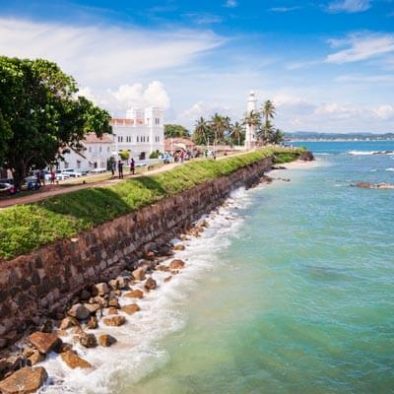
Galle
Galle is located 115 km south of Colombo and is the most important seaport of the south. The fortress Gallle and the old town were built in 1663 by the Dutch and are today World Heritage by UNESCO. In Galle today is the largest preserved fortress in South Asia and shows an interaction between European and Asian architecture.
Before the colonization of Persians, Arabs, Greeks, Romans, Malians and Indians, Galle was an important seaport. When the Portuguese surrendered to the Dutch in 1640, Galle became the seat of the governor of the Dutch East India Company (VOC) and thus the capital of Dutch Ceylon. The British, who took over the land from the Dutch in 1796, used the fortress as a local administrative center.
Tip: The Dutch Museum of Galle houses many paintings, writings, furniture and ceramics from the Dutch period.
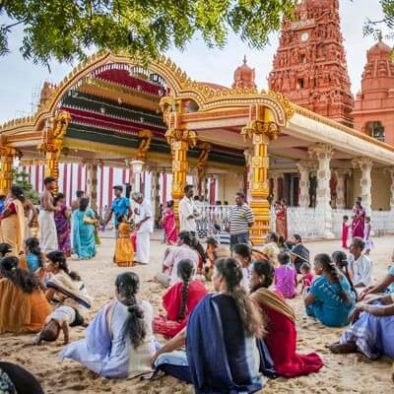
Jaffna
Jaffna is the capital of North Province and Jaffna district and the most important city in the Tamil-populated north of the island. Jaffna is located in the north of Sri Lanka about 360 kilometers north of the capital Colombo on the Jaffna peninsula, an area that is only connected by a narrow strip of land with the rest of the island. The city is located on the south coast of the peninsula on the shores of a lagoon, which is separated by several offshore island of the Palkbucht. In Nallur, about three kilometers east of Jaffna’s city center, is the Nallur Kandaswamy Temple, one of Sri Lanka’s most important Hindu temples. Among the numerous other Hindu temples is the Naguleswaram Temple, which is also worth seeing. Historically, the Fort Jaffna, it was founded during the Portuguese colonial period in the early 17th century and 1680 renewed by the Dutch and rebuilt in 1792 again.
Attractions: Jaffna Fort, St. James Church, Jaffna Archaeological Museum, Point Pedro Lighthouse, Nagadeepa Temple (by boat), Keerimalai Naguleswaram Temple, Kantharodai, Keerimalai Hot Springs, Nallur – Kandaswamy Hindu Temple.
We now also offer round trips in the undiscovered north to Jaffna!
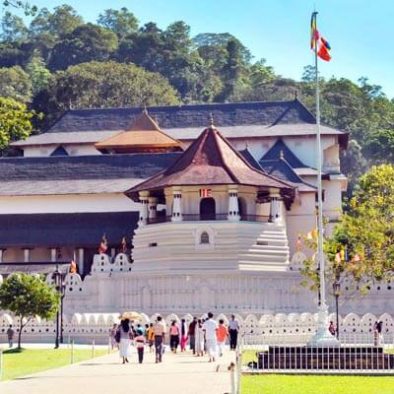
Kandy
Kandy is almost exactly in the middle of the island at an altitude of about 500 m. Kandy is surrounded by hills, valleys, lakes, rivers and large and small waterfalls. Not far from the city, the tea plantations begin in the mountains. Kandy also has a rich history. The city was a stronghold of many former Sinhala kings. The center of the city is without a doubt the Temple of the Tooth. Here is the upper left canine Buddah kept. The temple district has been a UNESCO World Heritage Site since 1988. As a tourist, Kandy is a highlight of any trip, as it is the most beautiful and picturesque city on the island – a must for every visitor.
Attractions: The Temple of the Tooth, Gadaladeniya Temple, Royal Botanical Garden Peradeniya, Kandy Dancing, Sightseeing of the Old Town.
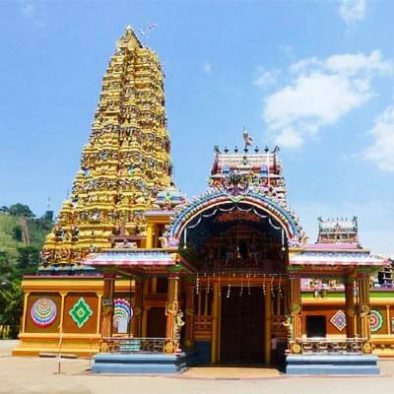
Matale
Matale is located in the central province of Sri Lanka, 142 kilometers northeast of Colombo and 26 kilometers from Kandy. The city is located at about 470 m above sea level and has about 41,000 inhabitants. Matale is the hub of a major plantation area that grows rubber, cinnamon, pepper, chilies, tea, rice, vegetables and herbs. The prosperity of these numerous crops is due to the humid tropical climate and the location in a broken only in the north mountain, the Knuckles Range Mountains.
In the center is the famous Hindu temple Sri Muthumariamman Thevasthaman, whose colorful and rich figureheads are very interesting. Furthermore, to the north of Matale is also the rock temple of Aluvihara, which is considered one of the most important sites of Buddhism in Sri Lanka.
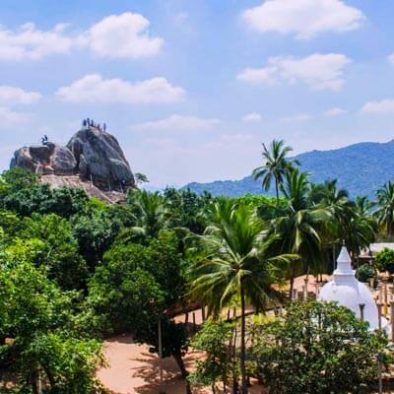
Mihintale
Mihintale is one of the oldest sites of Buddhism in Sri Lanka. The Buddhist monastery is located on the Missaka mountain, 7 km east of Anuradhapura. The monk Mahinda was sent by the Indian King Ashoka to proclaim Buddhism to Sri Lanka.
When King Devanampia Tissa was hunting and pursuing a stag, Mahinda suddenly stood before him. Through a conversation with him, he was converted to Buddhism. He had a large monastery built on the hill, including a Dagoba from the 2nd century BC.
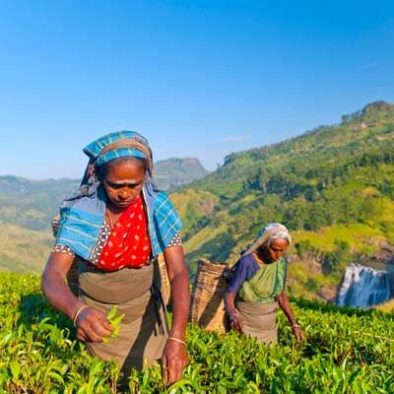
Nuwara Eliya
Nuwara Eliya is the Sinhalese city of light. Nuwara Eliya is located approximately 2000 meters above sea level in the Central Mountains and is the highest town in the country. The place was founded in the 19th century for the British colonial officials as a resort by Samuel Becker. Many buildings in the English style still survive today. Nuwara Eliya is the center of the mountainous region and lies in the middle of the tea industry, so it is surrounded by beautiful lush tea plantations. Typical of the region is its fertility. Due to the cool climate, fruits and vegetables grow here, which otherwise only occur in temperate latitudes. Nuwara Eliya is therefore also a good place for those looking for a cool break from the tropical beaches.
Attractions and activities: visit to a tea plantation, tour in a tea factory, Victoria Park, Sita Eliya Hindu temple, horse riding, golf, hiking or walks in the area.
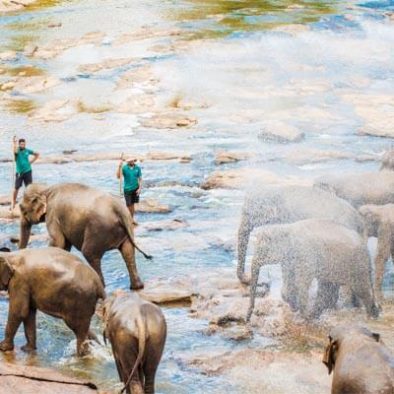
Pinnawela Elephant Orphanage
Pinnawela is approximately 80 km northwest of Colombo and 40 km west of Kandy. The elephant orphanage is one of the most visited tourist attractions in Sri Lanka. On the island you love elephants very much. Here elephant babies who have lost their mother or injured elephants are delivered to raise them with human help. Today, the resulting herd counts over 70 elephants, making it the largest herd of domesticated elephants in the world.
The highlight of each day is to watch the many pachyderms feeding in the morning and then bathing in the river. In Pinnawela approximately 110 employees look after the elephant herd. About 15,000 kg of feed is needed daily. The elephant orphanage of Pinnawela is funded by tourism and the government.
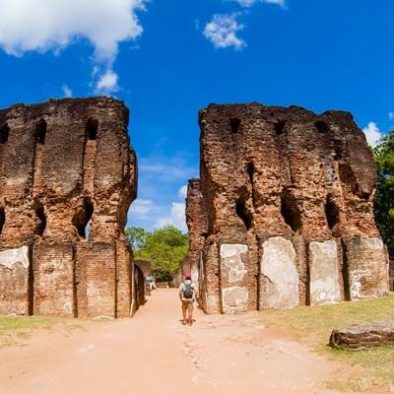
Polonnaruwa
Polonnaruwa is located 215 km northeast of Colombo. From the 7th century kings Polonnaruwa used mainly as a country residence. In the 11th century AD, Polonnaruwa became Sri Lanka’s capital. Since 1982, the superbly designed archaeological park has been a UNESCO World Heritage Site.
Remains of large stupas (Dagoba in Sinhalese) and temples with numerous Buddha figures as well as gardens, parks and palaces and various buildings of a sprawling city make the plant a major attraction of tourism on the island. In Polonnaruwa the monuments are younger than in Anuradhapura and therefore better preserved.
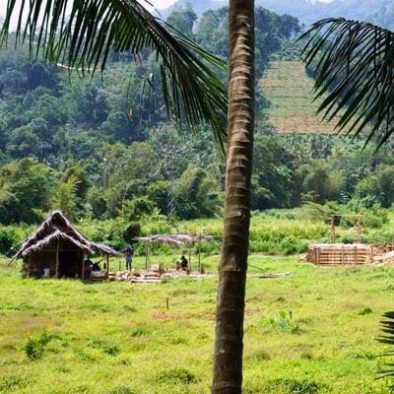
Ratnapura
Ratnapura is located 103 km from Colombo and is famous for its gemstones. (“Ratnapura” Sinhalese “City of Gems”). Sri Lanka has the largest concentration of gemstones in the world. Ratnapura is the most important gemstone center in Sri Lanka. Mainly rubies, sapphires and cat’s eyes (a variance of chrysoberyl) are broken down. Furthermore, topaz, tourmaline, alexandrite, aquamarine, garnet, amethyst, spinel, zircon, moonstone.
In Ratnapura Gems National Museum, the model of a gemstone pit is built. Also prehistoric fossils from the mines around Ratnapura are on display in this museum. The GemMuseum demonstrates the exploration and processing of gemstones. Ratnapura lies between the southern plains and the mountains to the east. From here one of the pilgrim routes leads to Adams Peak. Nearby is Sinharaja National Park, the last remaining rainforest on the island. In the area of Ratnapura rice, fruits and tea are grown.
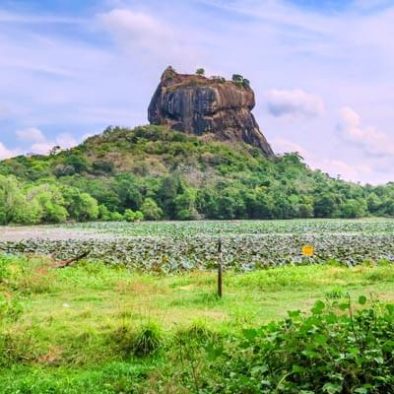
Sigiriya
Sigiriya is a monolith rising 200 meters from the bottom of the jungle. The Rock Fortress, also called Lion’s Rock, is one of Sri Lanka’s most remarkable and historic places and is therefore also known as the eighth wonder of the world.
The climb is arduous because of the altitude and the heat, but the prospect will reward them for all their efforts. With every step you gain in height, the view becomes more breathtaking. On nearly exact half of the ascent, wait the beautiful frescoes, the cloud girl. It’s worth paying Sigiriya a visit.
If you are not confident that you will be able to climb the approximately 1,200 steps and descend again, then you have the alternative to take a long look at the ancient gardens at the foot of the cliff. The now restored pleasure gardens are home to vestiges of pavilions, a monastery complex and a centuries-old fountain, which is still bubbling up today.
Conclusion: A visit to Sigiriya is a must for every visitor.
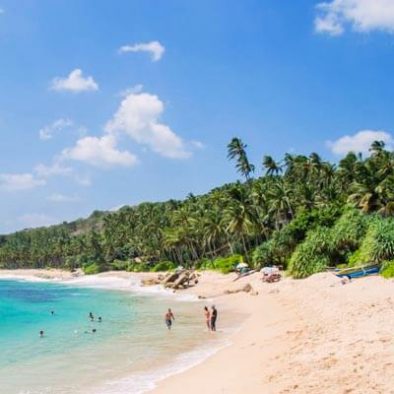
Tangalle
Tangalla (or Tangalle), the name means “protruding rock”. Tangalle is a tranquil fishing port in one of the largest bays in Sri Lanka. On the way from Yala National Park to Galle it is worth taking a break at one of the wonderful sandy beaches. It is also worthwhile to visit the nearby rock temple of Mulkirigala. As you climb up, you pass a series of natural caves with numerous murals and Buddha statues.
About 10 km towards Matara in Dikwella, is one of the most colorful Buddhist temples in Sri Lanka, the Wewurukannala Vihara. Next to it is one of the largest Buddha statues of the island to climb. From the top you have a great view of the plain. Another sight: The Blowhole “Blow Hole”. A crevice in the mountain blows water fountains meter high in the air. During the rainy season, this natural spectacle is particularly pronounced to observe.
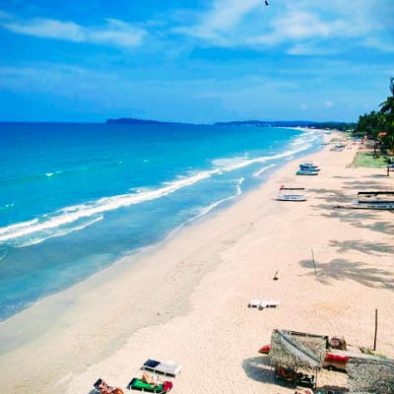
Trincomalee
Trincomalee is the capital of the Eastern Province and is located in northeastern Sri Lanka, about 260 km from Colombo. “Trinco” as the city is popularly known, has one of the largest natural deep sea ports in the world. The symbol of the city is the Tirukoneswaram Temple, one of the most important Shiva temples of Sri Lanka.
Not far from Trincomalee is the wonder of the Hot Wells: several springs, which despite their proximity to each other, have very different temperatures. Around Trincomalee invite wonderful secluded beaches for swimming, diving and snorkeling. Especially popular with tourists and locals is the small island Pigeon island with coral beach, which can only be reached by boat.
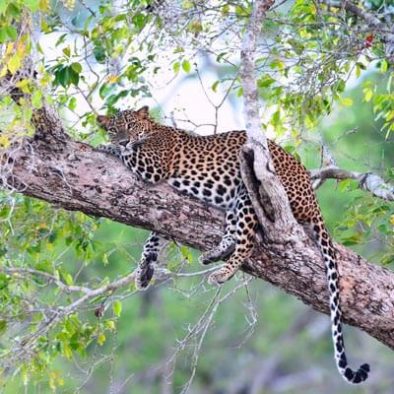
Yala National Park (Yale)
Yala National Park is the best known, largest and oldest nature reserve in Sri Lanka. The national park is located in the southeast of the island in the territory of the southern province of Uva. At 1512 km² are numerous mammal and bird species make the park a very popular destination. The park is divided into five blocks, of which only block 1 (Yala West) is accessible to day trippers. Yala offers a variety of habitats, large parts reminiscent of an African savanna, the outer areas of the park, however, are dominated by dense monsoon forests. Yala is the best park for the observation of wild animals such as the leopard, elephant, sloth bear, Sambarhirsch, crocodile, mongoose or Hanuman monkeys.
Tip: The best time to visit the park is from December to July.
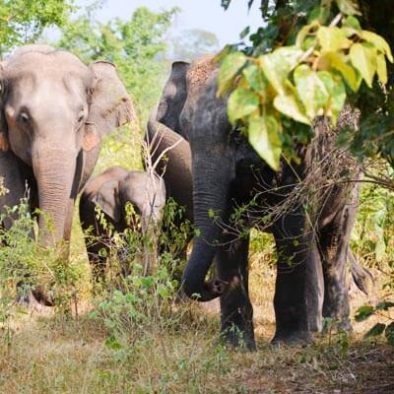
Udawalawe National Park
The Uda Walawe National Park is located in the south of the island between Ratnapura and Kataragama. The area was declared a national park in 1972 to provide protection for the species that live there.
Typical for the park is the relatively long dry season. Monsum is between May and September. The national park is famous for its large elephant population. Other species include water buffalo, muntjaks, mongoose, ax deer, wild boars and a small number of leopards.
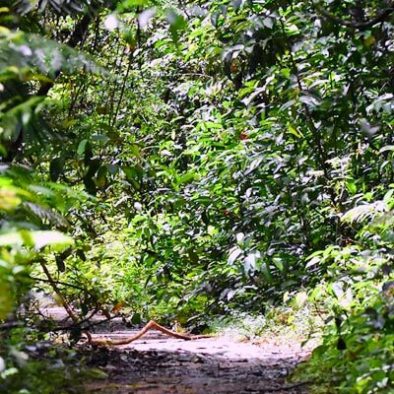
Sinharaja National Park
Sinharaja Forest is a tropical lowland rainforest in southwestern Sri Lanka. The Sinharaja National Park has been a UNESCO World Heritage Site since 1988 and is one of the last large contiguous forest areas on the island. The area is famous for its immense plant and animal diversity. Conclusion: For all nature lovers, the guided visit through the Sinharaja Rainforest is a real highlight!
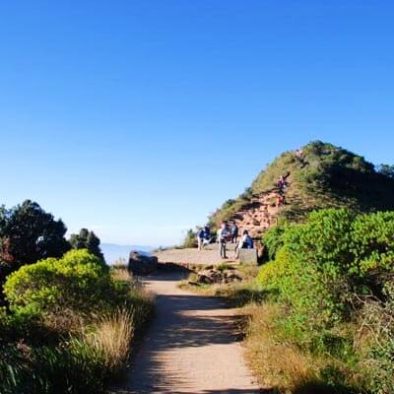
Horton Plains National Park
Horton Plains National Park is located in the highlands of Sri Lanka in the Nuwara Eliya district. The most famous attraction in the park is World’s End, where the plateau suddenly stops and falls almost 700 meters down. From the steep slope of more than 1050 meters in altitude, you have a clear view (in the early morning), a view to the sea.
The second major attraction of the National Park are the Baker Falls. They were named after the discoverer Samuel Baker, the founder of the city Nuwara Eliya. The park also has a rich variety of wildlife, including leopards and sambar deer.
